At the Vietnam Economic Pulse Forum 2024 with the theme "Future Orientation: Adjusting Vietnam's economic development strategy and policies in the new international context" co-organized by the Central Institute for Economic Management (CIEM) and the United Nations Development Program (UNDP) on November 1, experts pointed out that institutional improvement is a core factor in helping the economy develop.
| Experts suggest strategies to turn Vietnam into a high-income country IMF raises warnings about risks to Asian economy |
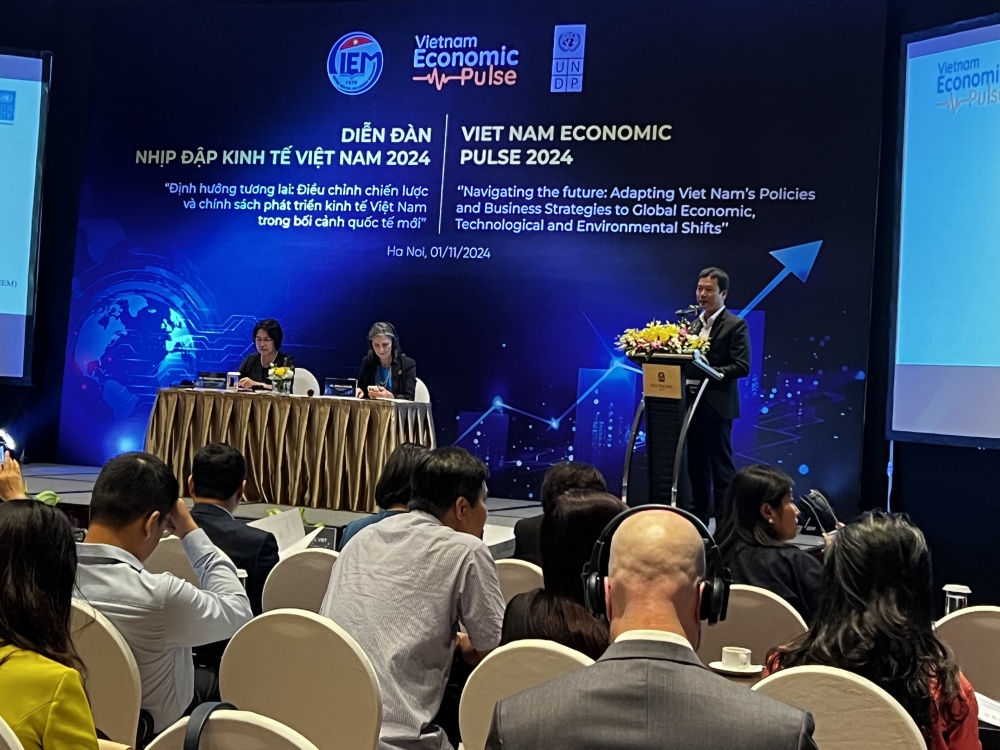 |
| New context requires new policy thinking |
The economy still faces many challenges
Vietnam's economy in 2024 will achieve an encouraging growth rate, expected to be from 6.8 - 7%. According to Dr. Nguyen Huu Tho, Head of the Analysis and Forecast Department of CIEM, Vietnam has recovered its growth momentum after the pandemic, becoming the economy with the highest growth rate in ASEAN. All three economic sectors: agriculture , construction industry and services recorded even growth.
However, Dr. Tho warned that the domestic economic structure is still weak and faces difficulties in expanding into the international market. Specifically, the export turnover of domestic enterprises will only account for 28.1% in 2024, lower than the 45.8% in 2010. In addition, although the goal by 2030 is to turn Vietnam into an upper-middle-income country, reducing the proportion of agriculture from the current 11.5% to 7.1%, this is a challenging task. Compared to countries in the region such as Malaysia and Thailand, this process will take more time and require more extensive reforms to achieve.
Meanwhile, although foreign direct investment (FDI) continued to be a bright spot with 24.7 billion USD in the first 9 months of 2024, up 11.6% over the same period, Dr. Tho emphasized that FDI was mainly concentrated in 14 provinces, accounting for 74.8% of total capital, causing some localities to hardly benefit from this capital source. The impact coefficient of FDI on growth is also very low, mainly because FDI enterprises import and process in Vietnam for re-export, instead of creating large added value for the economy.
Business operations also face many difficulties when out of every 100 newly established businesses, 89 businesses withdraw from the market, reflecting the instability of the production and business environment.
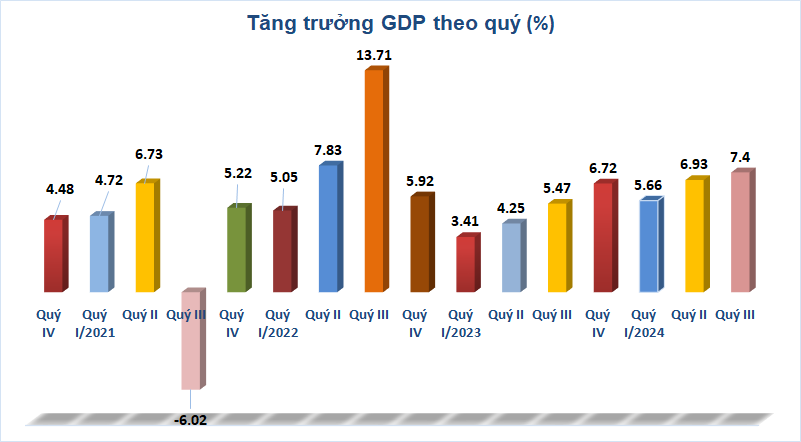 |
| Vietnam's GDP growth by quarter (Source: General Statistics Office) |
Positive signals from new economic institutions
2024 saw 29 new laws enacted to remove economic barriers and facilitate growth. Both Dr. Tho and Ms. Tran Thi Hong Minh, Director of CIEM, shared the view that institutional improvement is a core factor in helping the economy develop.
According to Dr. Tho, in the short term, it is necessary to focus on legal guidance documents and remove unnecessary business conditions to make it easier for businesses to access the market. In the medium term, legal reform is necessary to ensure that the Vietnamese economy operates effectively and sustainably, moving towards achieving sustainable development goals by 2045.
In the context of global trade recovery, Vietnam’s export market is forecast to continue to grow in 2025. However, Vietnam still faces risks from geopolitical instability, increasing trade defense trends and high transportation costs. The State needs to support businesses to take advantage of free trade agreements, while cutting production costs and combating waste to increase competitiveness.
Therefore, the economic picture in 2025 will be brighter when policies to support small and medium enterprises, especially those in disadvantaged areas, are focused on. These initiatives include supporting businesses returning to the market, new businesses, and businesses prioritizing investment in import-substitution industries.
At the Seminar, experts expect that building a healthy, transparent economic institution and evenly developed infrastructure is the path to making Vietnam a developed country by 2045. Short- and medium-term goals need to be further promoted to ensure sustainability in the economic development process.
Source: https://thoibaonganhang.vn/cai-thien-the-che-la-yeu-to-cot-loi-de-phat-trien-157367.html



![[Photo] Panorama of the Opening Ceremony of the 43rd Nhan Dan Newspaper National Table Tennis Championship](https://vphoto.vietnam.vn/thumb/1200x675/vietnam/resource/IMAGE/2025/5/19/5e22950340b941309280448198bcf1d9)
![[Photo] Close-up of Tang Long Bridge, Thu Duc City after repairing rutting](https://vphoto.vietnam.vn/thumb/1200x675/vietnam/resource/IMAGE/2025/5/19/086736d9d11f43198f5bd8d78df9bd41)
![[Photo] President Luong Cuong presents the 40-year Party membership badge to Chief of the Office of the President Le Khanh Hai](https://vphoto.vietnam.vn/thumb/1200x675/vietnam/resource/IMAGE/2025/5/19/a22bc55dd7bf4a2ab7e3958d32282c15)
![[Photo] General Secretary To Lam attends the conference to review 10 years of implementing Directive No. 05 of the Politburo and evaluate the results of implementing Regulation No. 09 of the Central Public Security Party Committee.](https://vphoto.vietnam.vn/thumb/1200x675/vietnam/resource/IMAGE/2025/5/19/2f44458c655a4403acd7929dbbfa5039)




























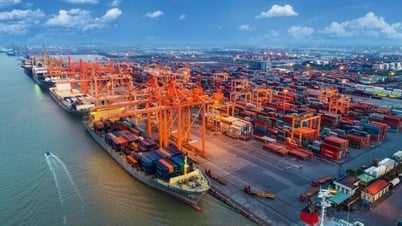

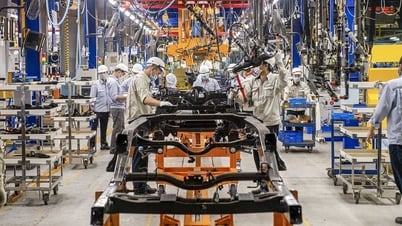
![[Photo] Prime Minister Pham Minh Chinh inspects the progress of the National Exhibition and Fair Center project](https://vphoto.vietnam.vn/thumb/1200x675/vietnam/resource/IMAGE/2025/5/19/35189ac8807140d897ad2b7d2583fbae)



















































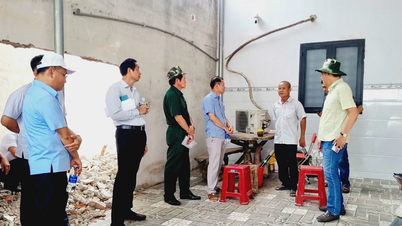





![[VIDEO] - Enhancing the value of Quang Nam OCOP products through trade connections](https://vphoto.vietnam.vn/thumb/402x226/vietnam/resource/IMAGE/2025/5/17/5be5b5fff1f14914986fad159097a677)




Comment (0)